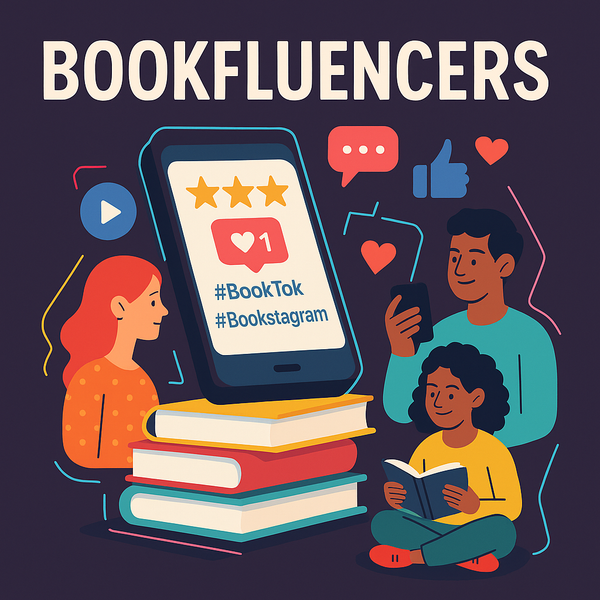How to use Social Media to skyrocket your self-published book sales (even without ads)

Why Social Media Matters for Indie Authors
If you really want to get your self-published book out there to real customers and reach your target audience, using social media is no longer optional, it’s detrimental to your success. Instagram, TikTok, Facebook, Twitter (X), and LinkedIn are just a few of the platforms that allow you to connect with your readers, understand their preferences, build a loyal fanbase and moreover spark interest for your book. The best part? Many strategies when it comes to using social media are basically free, making them a perfect match for indie authors who do not want to invest large budgets into promotion.
Social media could boost the reach of your work, whether you're releasing a nonfiction guide, a poetry collection, or your first book. But it requires a targeted, established strategy if you want to stand out, not just occasional posts.
Step 1: Choose the Right Platforms
You don't have to be active on every social media platform at once, and not all of them are made the same way. Concentrate your efforts on the areas where your target audience that is most engaged:
- Instagram: Great for visual storytelling, book aesthetics, cover reveals, and Reels.
- TikTok: Home of #BookTok, where short, engaging videos can go viral.
- Facebook: Good for reader groups, author pages, and event promotions.
- Twitter (X): Best for quick updates, industry connections, and hashtag trends.
- LinkedIn: Ideal for nonfiction authors and professional networking.
Prior to growing, start with one or two platforms and get proficient with them. Spreading oneself too thin is less important than quality and consistency.
Step 2: Create an Author Brand
You should treat your social media profiles as your business card. Define clearly who you are and what you write about. Make it personal and use your social media presence to share your thoughts and connect with your followers.Bear in mind to:
- Use a consistent author photo across platforms.
- Write a bio that mentions your book, genre, and a hint of personality.
- Include a link to your author website, book sales page, or newsletter signup.
A polished, cohesive presence builds trust with potential readers.
Step 3: Share Engaging, Value-Driven Content
Yes, you want to sell your book, but don’t be a salesperson. The message shouldn’t be ‘’Buy my book now!’’. Focus rather on showcasing content that educates, informs, entertains and inspires your audience. Some effective content ideas include:
- Behind-the-scenes glimpses of your writing process.
- Snippets or quotes from your book.
- Character introductions or fan art.
- Writing tips and relatable author struggles.
- Book recommendations in your genre.
- Reader shoutouts, reviews, and testimonials.
Mix promotional posts with personal and community-driven content to keep your audience engaged.
Step 4: Use Hashtags and Trends Strategically
Using hashtags allows you to reach more people than just your direct following. Look up trending hashtags in the book industry, like:
- #AmWriting
- #IndieAuthor
- #Bookstagram
- #BookTok
- #WritingCommunity
- #NewRelease
Participating in challenges or trends on sites like Instagram and TikTok might increase your visibility. Just ensure that they feel genuine and fit with your identity.
Step 5: Build Relationships, Not Just Followers
Social media is reciprocal. Prioritize developing relationships than only acquiring followers. Interact with other writers and creators, reply to comments, and express gratitude to readers for distributing your book.
Take part in community activities such as Twitter chats or Instagram challenges, join writer and reader clubs, and offer support to other writers. A strong network may help you reach a far wider audience than you could on your own.
Step 6: Plan and Schedule Your Content
Consistency is key. Create a simple content plan, outlining:
- How often you’ll post (e.g., 3–5 times a week).
- What types of content you’ll share (e.g., reels, posts, stories, tweets).
- Special dates to promote (e.g., book launch, sales, events).
Use free resources such as Buffer or Later to plan content and Canva for visuals. Making a plan in advance guarantees that you remain productive even during moments of intense writing.
Step 7: Track Results and Adjust
Don't publish mindlessly; instead, focus on what is effective. Utilize each platform's integrated analytics tools to keep an eye on:
- Engagement rates (likes, comments, shares).
- Follower growth.
- Click-throughs to your book sales page or website.
Seek out trends: Which kinds of postings receive the greatest engagement? Which times or days are most effective? Over time, use these findings to improve your approach.
Final Thoughts: Amplify Your Success with PubliWrite
Social media promotion of your self-published book is a fantastic way to reach readers and advance your writing career. However, you don't have to work alone.
PubliWrite offers a range of tools and community features to help indie authors succeed. From built-in promotional support to an engaged network of readers and writers, PubliWrite can help amplify your social media efforts and turn your book into a success story. If you don’t know how to start, what to create and how to be consistent, you can download our free social media guide for authors here.
Every post, story, and conversation is an opportunity for you to express your voice and let readers into your universe. Get started now, be genuine, and don't forget that being consistent and offering quality content on social media is a skill that you can learn and develop.





